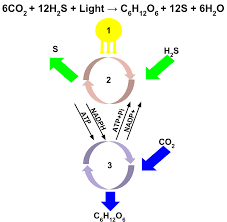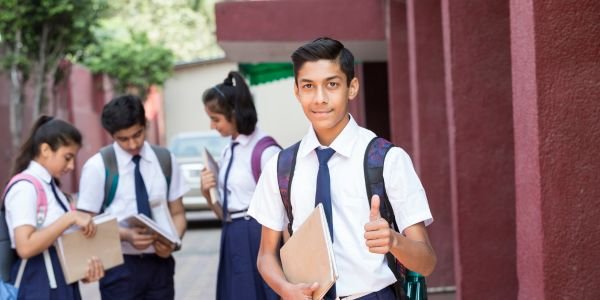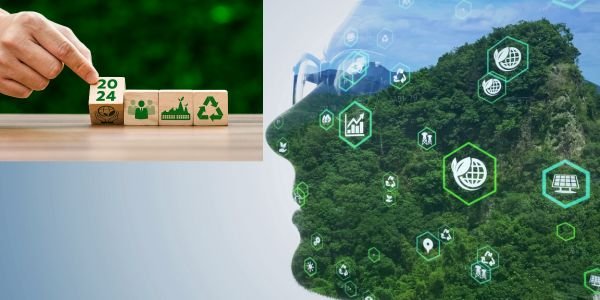Table of Contents
What is NADPH?
NADPH stands for Nicotinamide adenine dinucleotide phosphate (reduced). It is a coenzyme involved in many different biochemical reactions, including the synthesis of fatty acids, cholesterol, and other lipids. NADPH is a reducing agent, meaning that it donates electrons during redox reactions.
This C, such as the production of ATP in the Krebs cycle. NADPH is the reduced form of NADP+, which is the oxidized form. It is an important source of electrons for many redox reactions and is produced by the pentose phosphate pathway.
This pathway is found in both prokaryotes and eukaryotes and is used to generate reducing power for biosynthesis. NADPH is used in the biosynthesis of fatty acids and cholesterol.
It is used in the synthesis of long-term energy storage molecules, such as glycogen and fat. It is also used in the production of steroids and other lipids. NADPH is also important in the defense against oxidative stress. It helps to regenerate the antioxidant molecules that can neutralize reactive oxygen species (ROS).
NADPH is also important in photosynthesis. It is used to reduce carbon dioxide, which is then used to make glucose. Without NADPH, plants would not be able to produce the energy necessary to survive.
What is the role of NADPH?
NADPH (nicotinamide adenine dinucleotide phosphate) is a coenzyme that plays a key role in many metabolic pathways, including the biosynthesis of fatty acids, cholesterol, and many other lipids.
It is also an essential component of the pentose phosphate pathway, which is used to produce ribose sugar for nucleic acid synthesis.
NADPH is a reduced form of NADP+ (nicotinamide adenine dinucleotide phosphate) and is generated by two enzymatic reactions, the first being the oxidation of NADH (nicotinamide adenine dinucleotide) by the enzyme NADH dehydrogenase and the second being the reduction of NADP+ by the enzyme glucose-6-phosphate dehydrogenase.
NADPH is important for many cellular processes, including:
• Reducing power: NADPH is a reducing agent, meaning it can donate electrons to other molecules, making them more stable. This is essential for many reactions, including fatty acid and cholesterol biosynthesis, and is also used in the electron transport chain.
•Antioxidant protection: NADPH is used to regenerate the antioxidant glutathione, which plays an important role in protecting cells from oxidative damage.
•Immune system: NADPH is used by white blood cells to produce reactive oxygen species, which are used to kill invading bacteria and other microorganisms.
•Metabolic pathways: NADPH is used as a source of energy for many metabolic pathways, including the pentose phosphate pathway, which produces ribose sugar for nucleic acid synthesis.
In summary, NADPH is a coenzyme with many important roles in cellular metabolism, including reducing power, antioxidant protection, and providing energy for metabolic pathways. It is essential for the normal functioning of many biochemical processes.

The Structure and function of NADPH:
NADPH (Nicotinamide Adenine Dinucleotide Phosphate Hydrogen) is a coenzyme found in all living cells. It is essential for a variety of cellular processes such as energy production, fatty acid synthesis, and detoxification.
NADPH is a cofactor for the enzymes involved in these processes, and it provides the electrons and hydrogen atoms needed for metabolic reactions.
Structure:
NADPH is a coenzyme composed of a nicotinamide ring, an adenine base, and two phosphate groups. The phosphate groups are attached to the adenine base at the 3’ and 5’ carbon atoms, and the nicotinamide ring is attached to the adenine base at the 2’ carbon atom.
Function:
NADPH is an important coenzyme that is used in a variety of metabolic processes. It is a source of reducing power and can donate electrons and hydrogen atoms. This ability is essential for the synthesis of fatty acids and the detoxification of drugs and toxins.
NADPH is also required to produce energy in the form of ATP. In addition, NADPH is involved in the synthesis of certain amino acids and is necessary for cell growth and repair.
Sources of NADPH:
NADPH is a reduced form of nicotinamide adenine dinucleotide phosphate, which serves as a source of electrons and a reducing agent in many biochemical reactions.
It is involved in a wide variety of metabolic pathways, including those involved in the biosynthesis and metabolism of carbohydrates, lipids, proteins, and other biomolecules.
NADPH is generated by a number of different biochemical reactions, including the pentose phosphate pathway (PPP) and the malate-aspartate shuttle. Pentose Phosphate Pathway:
The pentose phosphate pathway (PPP) is a major source of NADPH. It is a metabolic pathway that operates in the cytoplasm of cells to synthesize NADPH and ribose-5-phosphate from glucose-6-phosphate.
This reaction is catalyzed by the enzyme glucose-6-phosphate dehydrogenase (G6PDH). The NADPH produced by this reaction is used for a variety of metabolic processes, such as fatty acid synthesis, amino acid synthesis, and the synthesis of nucleotides.
It also plays an important role in antioxidant defense mechanisms, providing reducing equivalents to protect cells from oxidative damage.
Malate-Aspartate Shuttle:
The malate-aspartate shuttle (MAS) is a mechanism used by cells to transport reducing equivalents in the form of NADH and NADPH across the mitochondrial membrane. This shuttle is composed of two separate pathways, the malate-aspartate shuttle, and the NADH-NADPH shuttle.
The NADH-NADPH shuttle is the main source of NADPH, as it involves the transfer of electrons from NADH to NADPH. This reaction is catalyzed by the enzyme malate dehydrogenase (MDH).
Glutathione Reductase: Glutathione reductase (GR) is an enzyme that catalyzes the transfer of electrons from NADH to glutathione (GSH). This reaction is the major source of NADPH in the cell, as it allows electrons to be transferred from NADH to GSH, which can then be used to reduce other molecules.
This reaction is important in maintaining the intracellular redox balance and protecting the cell from oxidative damage. Other Sources: NADPH can also be generated from the oxidation of glycerol-3-phosphate and from the breakdown of NADH by NADH dehydrogenase.
Additionally, NADPH can be synthesized from the reaction of NADH and NADP+ in the presence of the enzyme NADH-NADP+ oxidoreductase.
The Clinical significance of NADPH:
NADPH (Nicotinamide Adenine Dinucleotide Phosphate Hydrogen) is an important cofactor in cellular metabolism and is involved in many reactions in the body.
It is the primary source of energy for the cell and is involved in processes such as the synthesis of fatty acids, steroids, and nucleotides, as well as in the reduction of reactive oxygen species.
NADPH is critical for maintaining the balance of energy and redox reactions in the body. It is involved in the production of the enzyme Superoxide Dismutase (SOD), which plays a key role in the removal of oxygen radicals and other reactive oxygen species from the cells.
This can help protect the cell from damage caused by oxidative stress. Furthermore, NADPH is involved in the production of Glutathione, which is an important antioxidant in the body.
This can help protect the cells from damage caused by free radicals. NADPH is also involved in the production of essential molecules and in the metabolism of carbohydrates, lipids, and proteins.
It plays a key role in the transfer of electrons in the electron transport chain, which is essential for the production of ATP (Adenosine Triphosphate).
Furthermore, NADPH is involved in the production of NADH (Nicotinamide Adenine Dinucleotide Hydrogen), which is important for the metabolism of carbohydrates, lipids, and proteins.
Finally, NADPH is a key component of the body’s immune system. It is involved in the production of antibodies, which are essential for fighting off infections. Furthermore, NADPH is involved in the activation of phagocytes, which are important for engulfing and destroying pathogens.
In summary, NADPH is an important cofactor that plays a key role in many cellular processes, such as energy production, redox reactions, antioxidant protection, and immune system activation.
It is essential for the maintenance of health and is involved in the production of essential molecules.
The Conclusion:
NADPH (Nicotinamide adenine dinucleotide phosphate) is a coenzyme that is vital for many metabolic pathways. It acts as an electron carrier and is involved in many redox reactions related to biosynthesis and energy production.
NADPH is generated from NADP+ in two different ways: the oxidative pentose phosphate pathway and the malic enzyme pathway. The oxidative pentose phosphate pathway involves the oxidation of glucose-6-phosphate and the reduction of NADP+ to NADPH.
The malic enzyme pathway involves the oxidation of malate to form pyruvate and the reduction of NADP+ to NADPH. The NADPH produced in the pentose phosphate pathway is then used by the reductive biosynthetic pathways to reduce various substrates.
It is most commonly used in the biosynthesis of fatty acids, cholesterol, steroids, and amino acids. In addition, NADPH is required for the detoxification of drugs and toxins in the body, and for the regeneration of the active form of vitamin B6. NADPH is also used for the production of NADH, which is a coenzyme that is essential for the production of ATP in the mitochondria.
In conclusion, NADPH is a vital coenzyme for many metabolic pathways. It is involved in the production of fatty acids, cholesterol, steroids, and amino acids.
It is also used for the detoxification of drugs and toxins, and for the regeneration of the active form of vitamin B6. Additionally, NADPH is required for the production of NADH, which is essential for the production of ATP.
The future directions of NADPH:
NADPH is a coenzyme that plays a crucial role in many metabolic pathways. It is involved in the metabolism of carbohydrates, lipids, proteins, and nucleic acids, as well as in the synthesis of fatty acids, steroids, and other biomolecules.
NADPH is also involved in the production of reactive oxygen species (ROS) and the defense against oxidative stress. In the future, NADPH could play a major role in biotechnological applications, such as biofuel production, bioremediation, and metabolic engineering.
For instance, NADPH could be used to convert biomass or renewable feedstocks into biofuel. It could also be used to remove contaminants from wastewater and to engineer metabolic pathways for the production of certain compounds.
In addition, NADPH could be used to produce biodegradable plastics and other environmentally friendly materials.
This could be achieved by engineering metabolic pathways to produce the desired compounds. Furthermore, NADPH could be used to develop novel therapeutic agents and to improve existing ones.
For example, it could be used to enhance the efficacy of drugs by modifying their metabolic pathways. Finally, NADPH could be used to develop novel diagnostic tools and to improve existing ones.
For instance, it could be used to monitor the metabolism of cells and tissues, allowing for the early detection of diseases.
Overall, with further research and advances in biotechnology, NADPH will continue to play an important role in the future of medicine and biotechnology.
Also, read Megasporogenesis
































Comment on “NADPH full form”
Comments are closed.